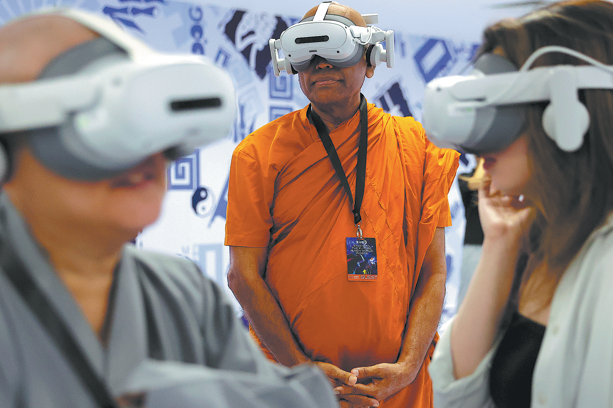Slow vaccine rollout may halt growth
China Daily Global | Updated: 2021-02-03 11:55

Rolling out COVID-19 vaccines in some parts of the world has raised hopes of a turnaround in the pandemic later this year, though renewed waves and new variants of the coronavirus pose concerns for the outlook.
According to media reports and predictions of world organizations, the world is slowly getting back in order, with businesses resuming activities.
Reuters reported that oil prices rose on Monday, buoyed by falling inventories and hopes of a swifter global economic recovery, though halting vaccine rollouts and renewed travel restrictions capped gains.
Goldman Sachs said prices could rise to $65 a barrel by July, forecasting an oil market deficit of 900,000 barrels per day in the first half of this year, higher than its previous prediction of 500,000 bpd.
A Reuters survey found that the Organization of the Petroleum Exporting Countries' oil output rose for a seventh month in January after the group and its allies, including Russia, agreed to further ease supply curbs, though the production growth was smaller than expected.
Oil and gas drillers in the United States are gearing up for a pickup in demand. As higher prices make new wells profitable again, they added rigs for a sixth month in a row in January.
US production data from the Energy Information Administration showed output rose above 11 million bpd in November, the first time it has exceeded that figure since April.
While global growth is still on course to rebound quickly from the recession of last year at some point, it may take longer to ignite and not be as healthy as previously forecast.
The World Bank trimmed its prediction in January to 4 percent this year, while the International Monetary Fund said in its updated outlook that the global economy is projected to grow 5.5 percent this year.
High frequency indicators tracked by Bloomberg Economics point to a troubling start to the year with advanced economies beginning on a weak note and emerging economies diverging.
"That's a reflection of the hard reality that ahead of widespread distribution of the vaccine, a return to normality is an unlikely prospect," said Tom Orlik, chief economist at Bloomberg Economics.
China is expected to show "spectacular" gross domestic product numbers in the first quarter this year, Andrew Tilton, chief Asia economist of Goldman Sachs, told CNBC on Monday.
The world's second largest economy showed robust GDP growth in the fourth quarter of last year, expanding at 6.5 percent compared to a year ago. It beat market expectations, and China is one of the few major economies in the world to record positive growth for a year mired by the pandemic.
Job slump
Bloomberg said double-dip recessions are now expected in Japan, the eurozone and the United Kingdom as restrictions to curb the virus spread are enforced.
The International Labour Organization expected that 8.8 percent of global working hours were lost last year due to the COVID-19 pandemic, according to Japan's public broadcaster NHK.
The ILO said the slump is equivalent to 255 million fulltime jobs. That is roughly four times the number lost in the 2009 financial crisis.
ILO Director-General Guy Ryder told NHK that "we are calling it the biggest shock to global labor markets since the 1930s-since the Great Depression".
These massive losses resulted in an 8.3 percent decline in global labor income before support measures are included, equivalent to $3.7 trillion or 4.4 percent of global GDP, according to an ILO report released on Jan 25.
Ryder said younger workers, who were in a weak situation in the labor market even before COVID-19 wreaked havoc in the world, have been hit worst by the pandemic. Employment loss among people aged between 15 and 24 stood at 8.7 percent, compared to 3.7 percent for those aged 25 or older.
He warned that there is an all-too-real risk of a lost generation, adding that "very high proportions of young people simply withdrew from the labor market and became inactive".
Gaps in the distribution of vaccines between rich and developing countries could create uneven recovery across the world, so Ryder called for more international cooperation in the field of vaccines and economic policy.
"I think it is fundamentally important to act on the understanding that nobody will be out of this crisis until everybody is out of this crisis," he said.
The International Chamber of Commerce published a report in January that estimated rich countries could lose up to $4.5 trillion if they fail to ensure developing nations have access to vaccines.
At current vaccination rates, only about 10 percent of the world would be inoculated by the end of this year and 21 percent by the end of next year, said Swiss multinational investment bank UBS. Only 10 countries are on track to vaccinate more than one-third of their population this year.
























